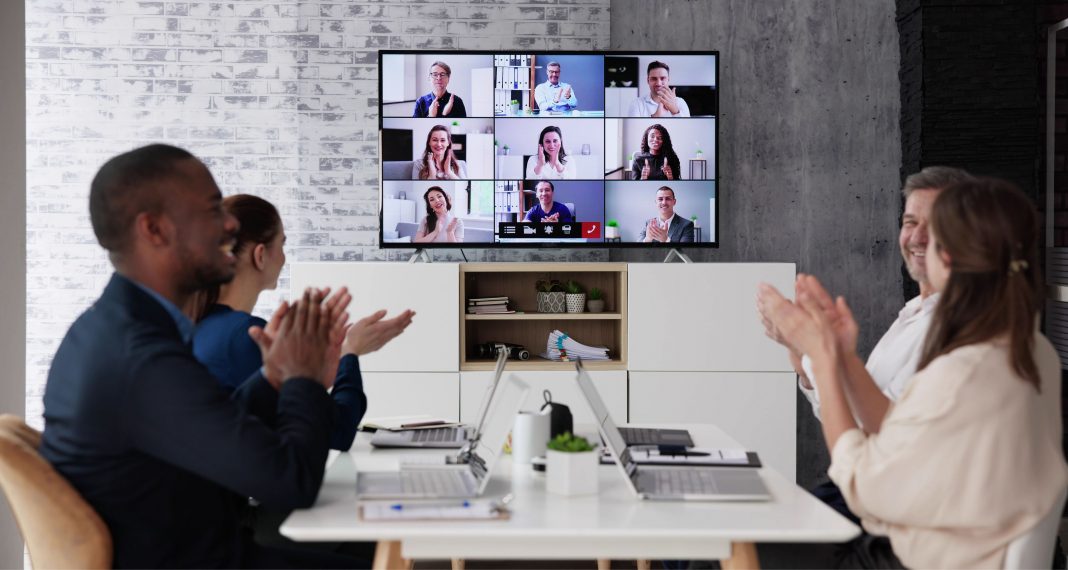Let’s skip the tired debate about whether people want to be back in the office. They’re already there, some willingly, some with a badge swipe and a sigh. So why is it that we focus so much on the “new norm” for employee behaviors and patterns, but not the new norm for our offices?
It’s easy to say we want a “tech-enabled workplace of the future.” The kind with AI-powered everything, flawless collaboration, and support at the touch of a button. But for most organizations, that vision feels more like a glossy vendor demo than a practical reality.
Budgets are tight. Legacy systems and processes are everywhere. And the idea of overhauling your entire workplace tech stack? Overwhelming at best.
Here’s the good news: you don’t need a seven-figure transformation to start building a smarter office. You just need to focus on the right things, bite-sized, high-impact moves that actually shift the employee experience forward.
This article isn’t about chasing the next shiny object. It’s about the essentials every organization, regardless of size, budget, or tech maturity, should prioritize to create a workplace that works better. Not perfect. Not futuristic. Just smarter, more intuitive, and more human.
1. Smart Meeting Room Technology
In today’s office, modern meeting rooms must deliver seamless, equitable, and intelligent collaboration experiences as a baseline. That means standardized video conferencing systems, wireless content sharing, and intuitive room controls that reduce friction from the moment a user walks in.
Spaces must also support hybrid work with high-quality audio and video that makes it feel like remote participants are truly in the room. Privacy and acoustic treatments are no longer optional, as employees expect soundproof environments for both focus and confidentiality.
Ultimately, meeting rooms must be flexible, adaptive, and data-informed, designed to foster inclusive collaboration across both physical and digital dimensions.
2. Visitor and Room Management Systems
First impressions set the tone for everything that follows. Nothing erodes confidence faster than a clunky lobby check-in or wandering aimlessly to find your meeting. We’ve all been there: waiting in line behind a group of visitors filling out paper forms or scrambling to text your host because security has no record of your arrival.
A modern visitor and room management system eliminates this chaos. Guests pre-register, receive digital passes, and glide through turnstiles with a tap of their phone. Hosts are notified automatically, while wayfinding directs visitors to the right room without detours.
For employees, the same system streamlines room bookings and check-ins, reducing ghost reservations and giving everyone more confidence that space will actually be available when they need it. When this layer of the workplace is broken, everything feels harder. When it works, it fades into the background and makes the day run smoothly.

3. Digital Signage
Think of digital signage as the workplace’s real-time information layer. Static posters and quarterly emails cannot keep pace with the daily rhythm of a modern office. When used well, signage does more than broadcast HR messages. It becomes a dynamic tool for culture and coordination.
Screens at entrances can greet guests with personalized welcomes. Displays outside rooms can show availability at a glance. In open spaces, signage can push real-time updates such as shuttle schedule changes, building announcements, or even live dashboards of sustainability metrics.
Done right, digital signage turns the office into an environment that communicates back, guiding, informing, and engaging people as they move through their day.
4. Occupancy Data & Analytics
Too many organizations still manage their space with badge data alone. But as any workplace leader knows, a badge swipe doesn’t equal a body in a chair. True occupancy data requires a more sophisticated approach to gathering data, and analytics that distinguish intention from reality.
Why does this matter? Because accurate data is the difference between keeping a whole floor open or consolidating to save millions. It is the evidence behind adjusting HVAC runtimes or investing in more phone booths instead of building yet another large conference room.
This doesn’t always mean deploying a brand-new layer of technology. In many cases, it is about making better use of the systems you already have. Wi-Fi access points, collaboration platforms, room booking data, and security systems all hold valuable signals that can be integrated and analyzed. By extracting and connecting the data that already exists, organizations can often unlock insights without adding more devices to walls and ceilings.
Occupancy analytics are not just about efficiency. They are about aligning the workplace to actual employee behavior, not assumptions. Without this visibility, leaders are flying blind on some of their largest expenses.

5. Workplace Feedback Tools
The smartest workplace is one that listens. Employees notice friction long before leadership does: a too-hot floor, a broken kiosk, a coffee machine that is always empty. Without easy ways to capture this feedback, small irritations compound into big frustrations.
Feedback technology lowers the barrier. QR codes placed throughout the office let employees submit issues in seconds. Just in time mobile surveys capture impressions after meetings or events. Dashboards route the data to the right team instantly.
When employees see issues resolved quickly, they gain confidence that their input matters. This creates a virtuous cycle of participation and improvement.

From Strategy to Execution – Guiding Principles
Strategy alone doesn’t transform an office. Execution is where the real shift happens.
To move from vision to reality, organizations need a clear set of guiding principles that translate ambition into action. These principles ensure that technology enhances, not complicates, the workplace experience, enabling seamless connection, productivity, and innovation across every corner of the office.
On Demand | Spaces and technologies should be available when and where employees need them, whether it is booking a room in real time, launching a meeting from a mobile device, or accessing collaboration tools instantly. On-demand functionality empowers agility and responsiveness in dynamic work environments.
Accessible | Every employee, regardless of location or ability, must be able to engage fully with workplace technologies. This includes intuitive interfaces, inclusive design, and equitable collaboration experiences for both in-person and remote participants. Accessibility is foundational to productivity and belonging.
Integrated | A tech-enabled office thrives on seamless interoperability. Systems for scheduling, conferencing, environmental controls, and analytics should work together across platforms and devices to create a unified experience. Integration reduces friction, simplifies support, and enhances efficiency.
Intelligent | Smart technologies powered by AI, sensors, and automation should actively enhance the workplace. From auto-adjusting lighting and temperature to real-time transcription and occupancy analytics, intelligent systems anticipate needs, optimize resources, and elevate user experience.
Adaptable | The office must evolve with its people. Spaces should be modular and reconfigurable, technologies scalable and customizable. Whether supporting a quiet focus session or a global town hall, adaptability ensures the environment can flex to meet changing workstyles and business demands.
Closing
The truth is, you don’t need to headline a magazine with a digital twin or an AI concierge to make your office smarter. You just need these five non-negotiables in place. They form the baseline of a modern workplace, not glamorous but essential.
At its best, workplace technology isn’t about bells and whistles. It is about removing friction, amplifying human connection, and making it easier for people to do their best work. Think of it less like a glossy vendor demo and more like the rhythm section at a music festival: steady, reliable, and impossible to play without.
Get these fundamentals right, and suddenly the more advanced innovations such as AI planning, immersive collaboration, and predictive analytics actually have something solid to build on. Ignore them, and no amount of shiny tech will fix a workplace that doesn’t work.


